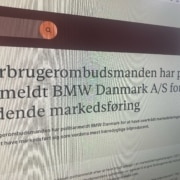What is regenerative business and how to communicate it without greenwashing?
Sustainability has been the buzzword in business for the past decade. But recently, a new word has taken off. Now we have to be “regenerative”, but do you dare to communicate about it after the Consumer Ombudsman’s many orders to companies for greenwashing?
Photo: There is a new regenerative movement underway in agriculture, where more people are looking to use different techniques to, among other things, make the soil capture more CO2.
What does it mean for companies to be regenerative and what should corporate press and marketing departments be aware of when communicating about it?
First, consider the definition of sustainable
It’s easier to understand the meaning behind regenerative if you start with the word “sustainable”. Here we take the Consumer Ombudsman’s understanding of the term, which comes from the Brundtland report where the term was defined. This definition has led to a large number of companies being accused of greenwashing since 2022 (and there are almost certainly many, many more at risk of criticism).
Do you have a greentech business? Then our PR agency may be able to help you.
The definition simplified:
A product or company can call itself sustainable if it can get external proof that it does not harm future generations.
This means, for example, that it must have zero CO2 emissions, zero use of chemicals – even no driving to and from meetings, as that means no CO2 in the atmosphere (even electric cars need to be charged with 100% renewable energy if they are to last. And what about the production of the car in the first place?) In principle, the lunch must be picked from the garden, where no pesticides are used, if the company is to meet the definition. Unless, for example, the company plants a lot of trees to compensate.
This is a rather strict interpretation of the word sustainable, but it is the interpretation we should get used to after the Consumer Ombudsman’s tightened practice.
But what can you say?
It’s okay to say that your company is undertaking sustainability initiatives, as long as it’s actually doing it. But calling your company or product sustainable in a general sense is not okay in 99.99% of all cases. This is considered a breach of marketing law (but note that future rulings may change this interpretation).
Read more about sustainability communication here.
So what is regenerative?
Regenerative business is about more than being sustainable. It’s about rebuilding and regenerating natural resources and social systems, instead of focusing only on minimizing negative impacts.
This is a significant change from the previous approach, which for years viewed sustainability as a burden or something that only needed to be implemented to comply with rules and regulations.
But becoming regenerative is not an easy task. It requires a fundamental shift in business practices and a deep understanding of the systemic implications of a company’s operations, its product lifecycle and its choice of suppliers. Companies must not only limit their negative impact, but also contribute positively to, for example, the climate, while running a business that doesn’t make a loss.
An example of a regenerative measure could be increasing the number of naturally occurring plateaus in a forest to capture more CO2 and increase biodiversity.
How do you communicate about sustainable and regenerative initiatives?
The Consumer Ombudsman’s strict interpretation of sustainability has caused several companies to slow down their sustainability communication. But it shows that they haven’t quite understood what it means, because you can communicate legally about sustainability initiatives if you do it in a balanced way.
Regenerative initiatives can give a boost to a company’s image, but marketing and PR teams need to be very careful not to just slap “regenerative” on products as a new buzzword to get attention. There must be a genuine commitment to changing the way the company operates and making a positive contribution to the world.
If the word “regenerative” is used in marketing, the company must be able to provide documentation that it delivers a net-positive impact on the climate, and this must be confirmed by external consultants – typically via an LCA (life cycle analysis).
On the other hand, it is easier to communicate – e.g. in press releases – that you have ambitions to cultivate regenerative initiatives in your company and what those initiatives are. As long as the company is honest and aware of where it may be harming the environment and climate – and also informs about it.
Communication around regenerative initiatives must be transparent, honest and reliable. Companies need to be able to demonstrate that they “walk the talk”. They need to be able to prove that they are taking the necessary actions and investments to become regenerative – especially if it’s used in marketing.
See our overview of grants for green projects here.
ESG reporting documents companies’ actions
But how do you prove your company’s regenerative actions? It does this by regularly reporting on progress and results. In the future, this will typically be done through ESG reporting, which must be done through the financial statements, where the information is easily accessible to stakeholders and shows how the company contributes to rebuilding and regenerating natural resources and/or social systems.
It’s important to highlight that the transition to regenerative operations is a long-term process that requires long-term commitment. Companies need to communicate that they are committed to continuing their regenerative efforts for the long term, even when things get challenging.
This means that, so far, there are only a few companies worldwide that can truly call themselves regenerative.
Read our own ESG report here.
Conclusion
Becoming regenerative is more than just a buzzword or branding strategy. It’s a fundamental shift in how businesses operate and interact with the world around them. For PR teams, this means a change in how company actions and commitments are communicated. But with the right approach, regenerative operations can not only improve a company’s image, but also contribute positively to the world, and those who crack the code to do so profitably are likely to be hugely successful in the future.
Still unsure about what you can communicate about regenerative initiatives?
Give us a no-obligation call on +45 4142 3635 or write to mark@kempkjaer.dk and we can guide you on your way. Our expertise is PR and communication, and we may involve other consultants if the issue goes beyond our field.
Read more about our “3-in-1” solution for B2B impact technology, which our PR agency specializes in.






